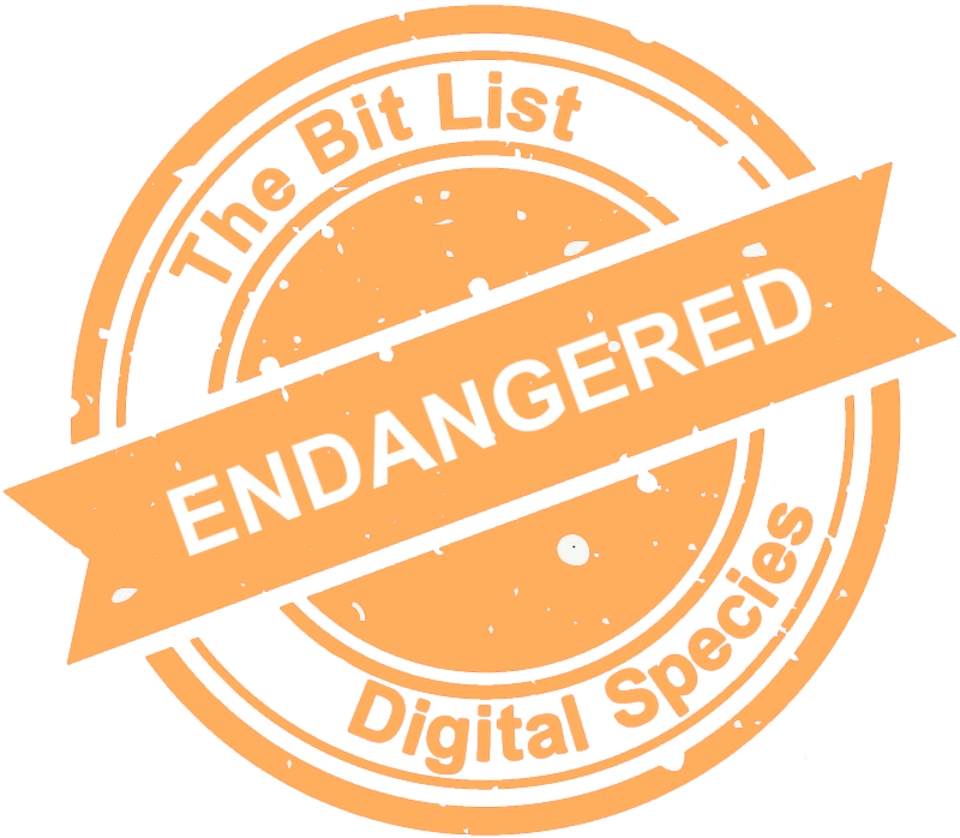Original Digital Music and Sound Recordings
 |
||
|
Original recordings of music and other performance from which retail products are derived, typically in multiple tracks and uncompressed high-resolution sound quality. |
||
|
Digital Species: Sound and Vision |
Trend in 2023:
|
Consensus Decision |
|
Added to List: 2019 |
Trend in 2024:
|
Previously: Endangered |
|
Imminence of Action Action is recommended within three years, detailed assessment within one year. |
Significance of Loss The loss of tools, data or services within this group would impact on people and sectors around the world. |
Effort to Preserve | Inevitability It would require a small effort to address losses in this group, requiring the application of proven preservation tools or techniques. |
|
Examples Original official recordings of a song, sound or performance owned by music industry. |
||
|
‘Critically Endangered’ in the Presence of Aggravating Conditions Single point of failure; storage on old or degrading media; lack of ongoing investment in changing preservation requirements; lack of capability; poor documentation; dependence on small staff; Uncertainty over IPR or the presence of orphaned works. |
||
|
‘Vulnerable’ in the Presence of Good Practice High-quality storage; meticulous and consistent replication; trusted repository; preservation requirement understood at the executive level and funded accordingly; leadership in preservation community; expert staff. |
||
|
2023 Review In 2019, this entry was added as a subset of a previous 2017 entry, ‘Digital Music Production and Sharing,’ which was split to draw attention to the different challenges faced by the different forms. Though it overlaps with other entries, including ‘Digital Archives of Music Production,’ it is a separate entry to emphasize the inherent and great value of original recordings over and above those distributed and the concomitant need for active preservation. Both the 2021 Jury and 2022 Taskforce agreed with the Endangered classification with no noted changes towards increased or reduced risk. The 2022 Taskforce additionally recommended use of the term original or primary rather than the term master, except for where it is part of a format’s formal name or an industry-standard use, which is now reflected in this entry and other relevant areas of the Bit List. The 2023 Council agreed with the Endangered with the overall risks remaining on the same basis as before (‘No change’ to trend). |
||
|
2024 Interim Review These risks remain on the same basis as before, with no significant trend towards even greater or reduced risk (‘No change’ to trend). |
||
|
Additional Comments The imminence of action will depend on format and age, and the significance of loss may be more largely felt if they are recordings of a major recording star. This is interesting as the recording houses should be seeing the value of these – so why are they not taking responsibility for looking after them? Do they not feel it is in their financial interests? The archival practices of the studios are typically based on value – the recordings are assumed to be worth keeping. However, this means relatively low-value originals may not be transferred to new media in a timely way and could be lost. There is no comprehensive deposit scheme to address the long tail of music production, and it is often unclear exactly where responsibility lies. Case Studies or Examples:
See also:
|
||





































































































































